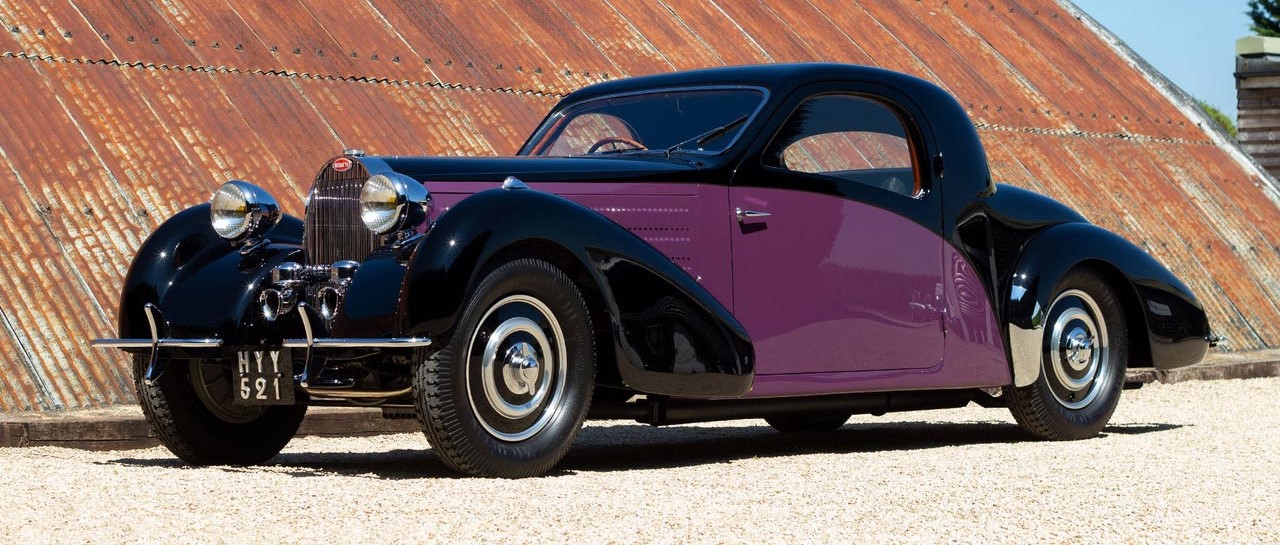
The Bugatti Type 57 Atalante Closed Coupé by Gangloff was produced from 1936 to 1938. The Atalante was one of the body styles built on the Type 57 chassis, which was designed by Jean Bugatti and produced from 1934 to 1940. The Atalante is a particularly iconic variant of this model, featuring a distinctive streamlined design that embodies the Art Deco style of the time.
Gangloff was a French coachbuilder known for creating bespoke bodywork for high-end cars. For the Type 57, Gangloff created several custom bodies, and the Atalante is one of the most celebrated versions. The Gangloff-bodied Type 57 Atalante is notable for its elegant and aerodynamic lines, which contribute to its unique and timeless aesthetic.
These cars were highly coveted in their time and continue to be prized by collectors today, with their rarity and historical significance adding to their value. Each Atalante was a one-of-a-kind creation, reflecting both Bugatti’s commitment to engineering excellence and Gangloff’s artistry in coachbuilding.
Many consider the Type 57 to be the pinnacle of Bugatti’s touring models. Revealed in 1934, it was the first car built under the direction of Jean Bugatti. He was also instrumental in the design of the new Type 57 engine, a 3.3-litre straight-eight producing 140bhp at a time when the equivalent Bentley figure was a ‘paltry’ 115bhp. The biggest selling point over and above the mechanical design, however, was the stunning body styling drawn up by Jean and in-house carpenter-wheelwright, Joseph Walter.
The Ventoux two-door, Galibier four-door and Atalante Coupé were later joined by the Aravis Coupé and the open Stelvio, from renowned local coachbuilder Gangloff. This Type 57 Atalante, 57633, was ordered in February 1938 by wealthy French industrialist Fernand Crouzet. He asked Gangloff to create a one-off, and its unique features included long rear wings, a bootlid-mounted spare-wheel mount, single back window, special bumpers and disc wheels. The car survived World War Two unscathed via several changes of owner, and post-war it was refurbished and put to use as transport for the French Embassy in London.

Engine and Performance
- Engine: 3.3-liter (3,257 cc) inline-8
- Power Output: Approximately 135-150 horsepower, depending on the specific tuning and modifications
- Torque: Around 270 Nm (199 lb-ft)
- Transmission: 4-speed manual
Dimensions and Weight
- Length: About 4,250 mm (167 inches)
- Width: Approximately 1,750 mm (69 inches)
- Height: Around 1,400 mm (55 inches)
- Wheelbase: 2,750 mm (108 inches)
- Weight: Roughly 1,300 kg (2,866 lbs)
Design and Features
- Body Style: Two-door coupe
- Coachbuilder: Gangloff
- Design: Art Deco-inspired streamlined bodywork
- Suspension: Independent front suspension with transverse leaf spring and rear live axle with semi-elliptic leaf springs
- Brakes: Hydraulic drum brakes
Performance
- Top Speed: Around 190 km/h (118 mph)
- 0-60 mph: Approximately 8 seconds

You must be logged in to post a comment.